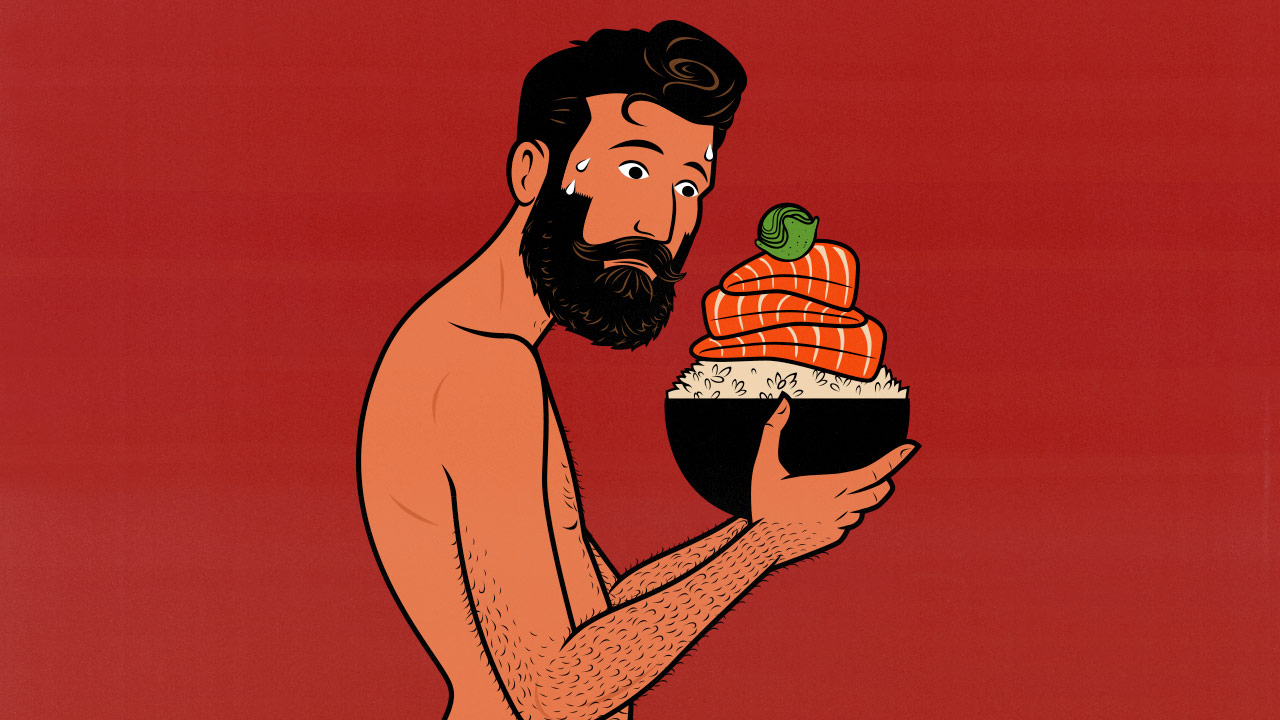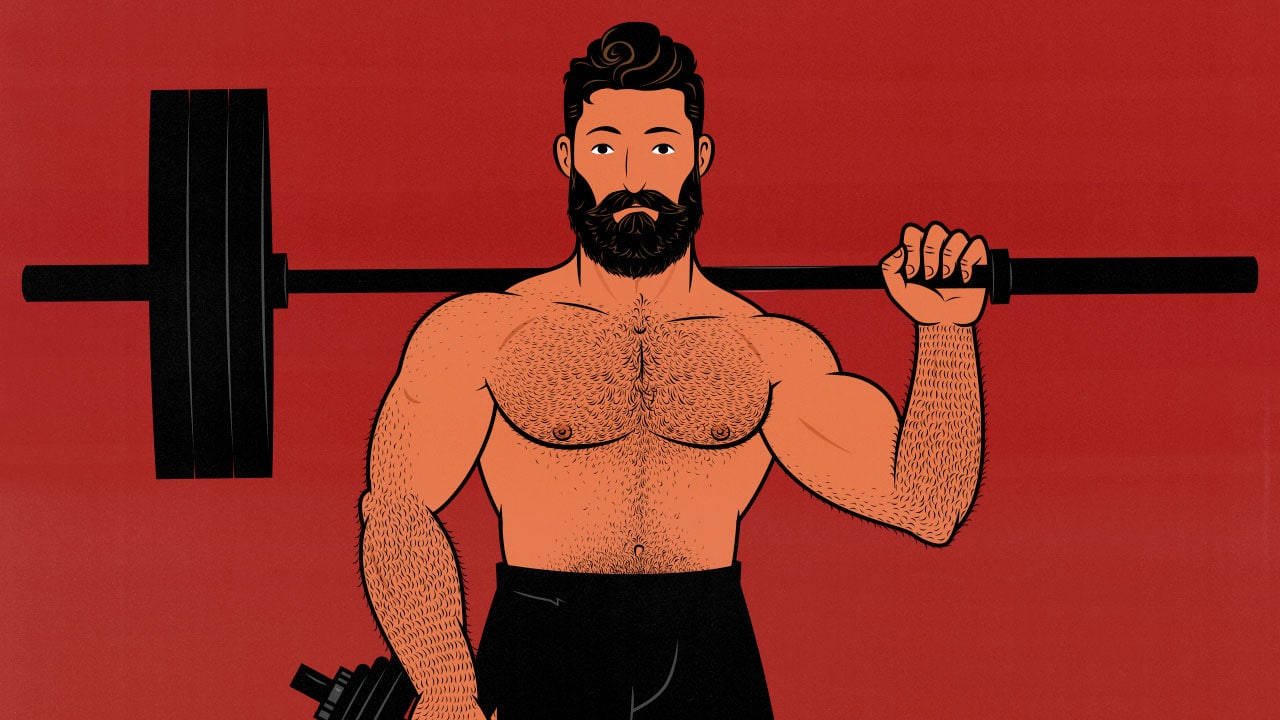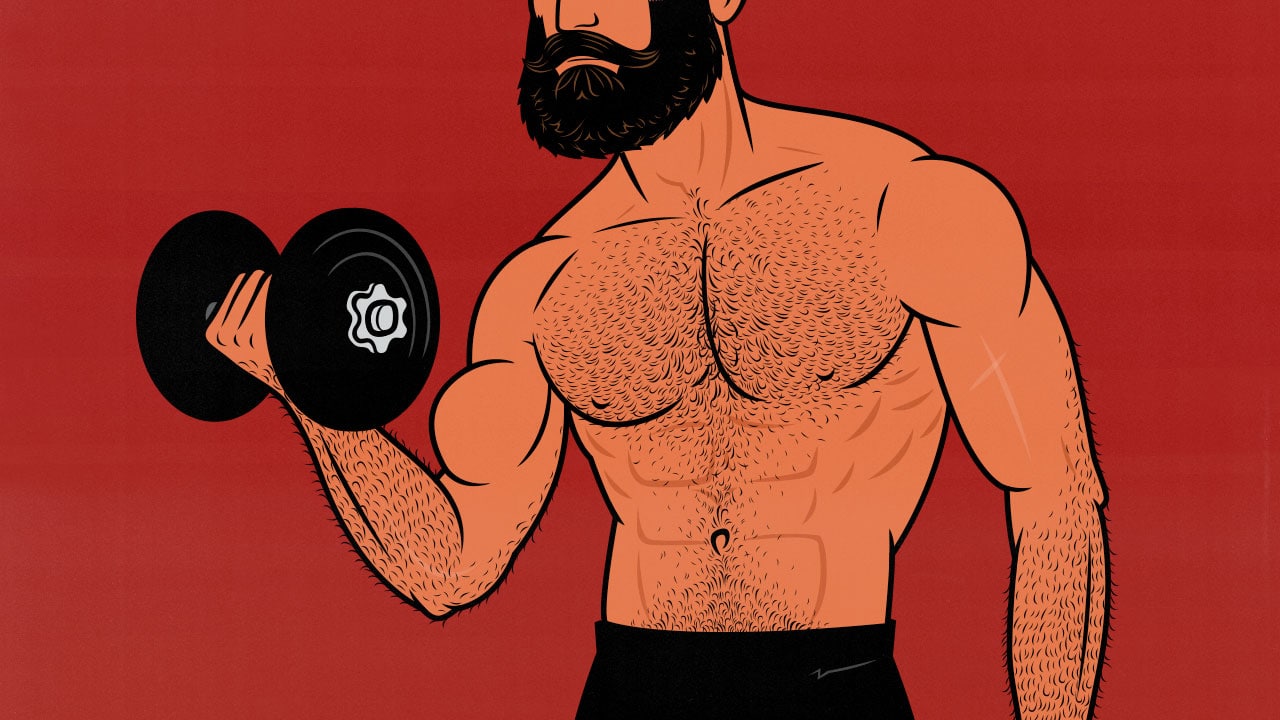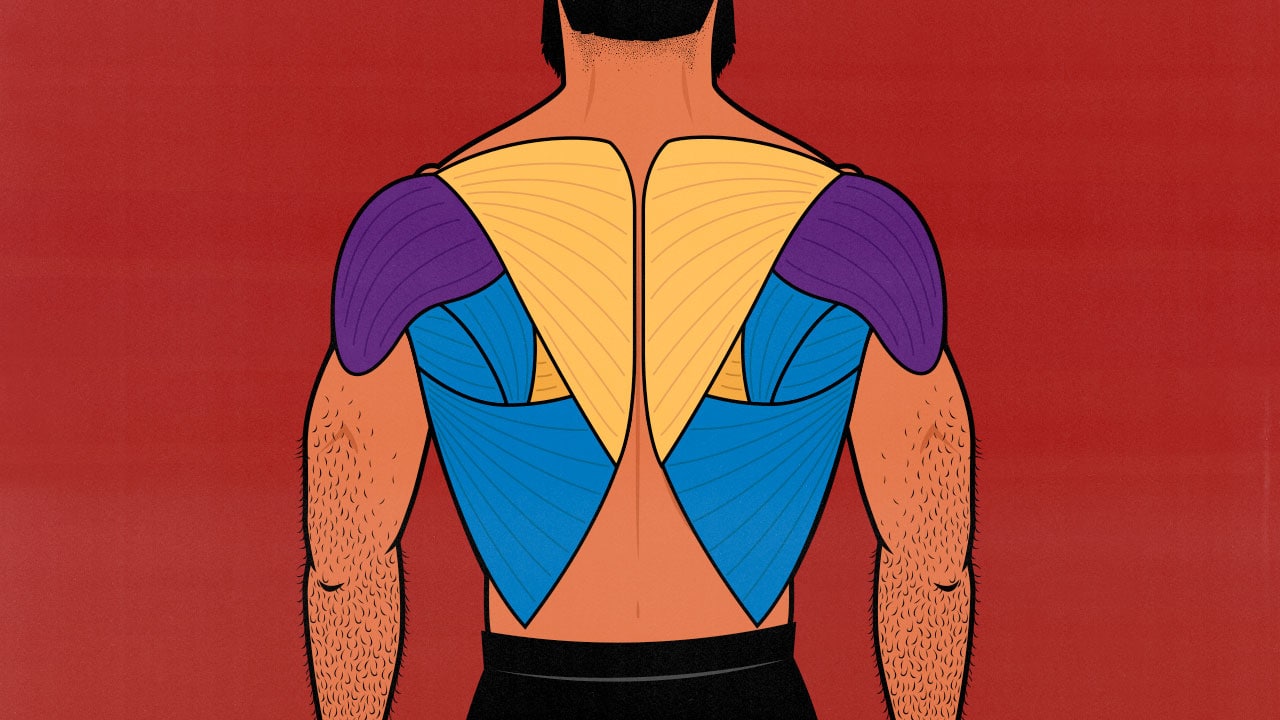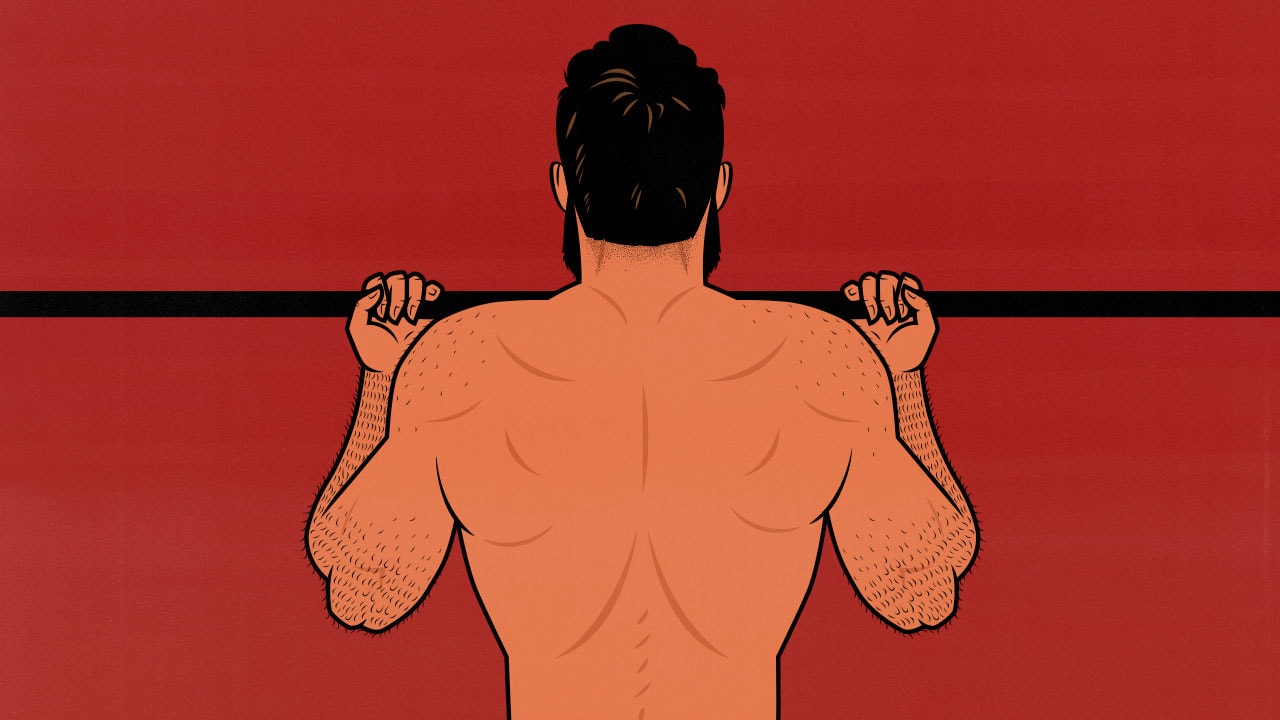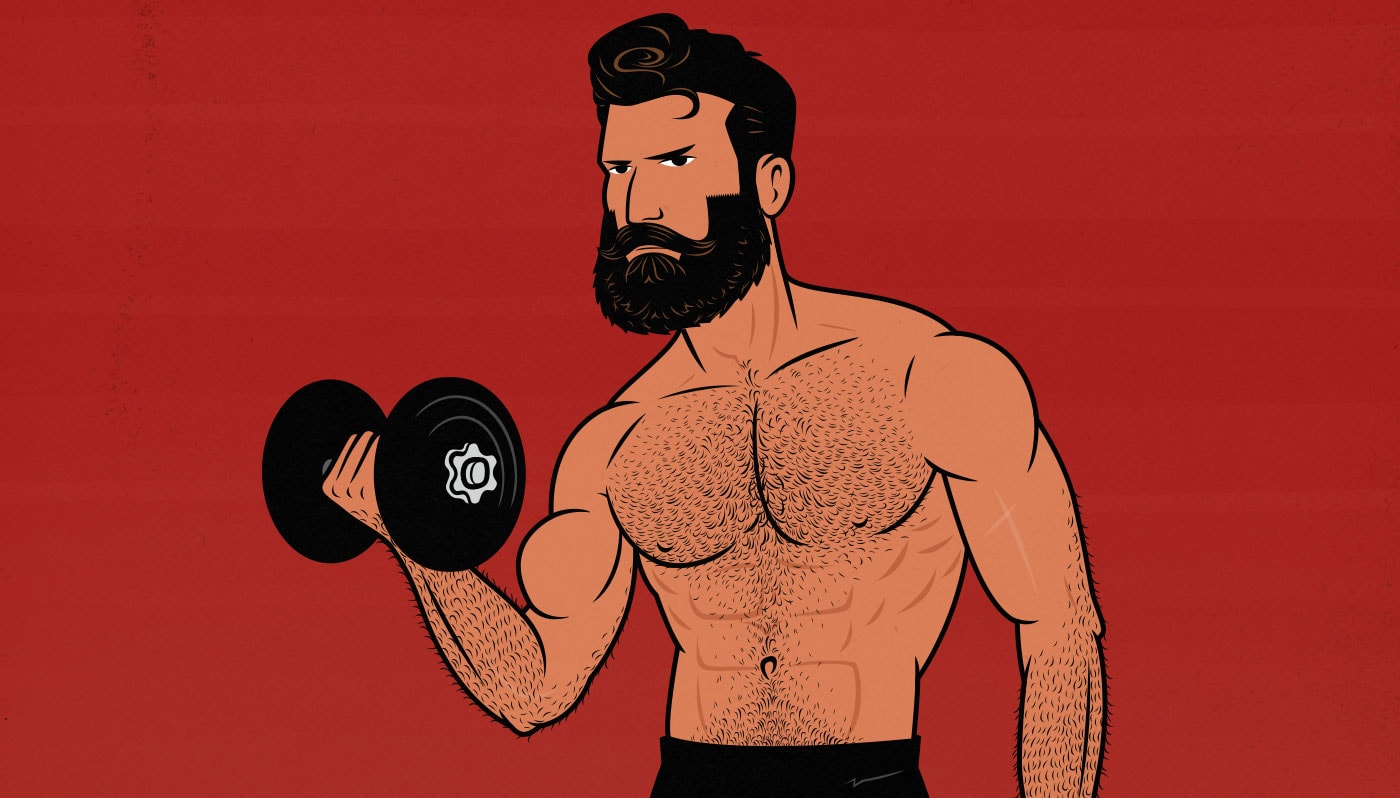Articles
100 Push-Ups a Day? You Can Do Better
The 100 Push-ups a Day Challenge is when you do 100 push-ups every day, usually for 30 days in a row. The goal is to improve your strength and fitness, building a bigger upper body as you go. It’s an admirable challenge. It’s also controversial.
Muscles take 2–4 days to recover from a strenuous workout. It’s during those days of recovery that they grow bigger and stronger. You won’t gain more muscle and strength by doing push-ups every day. In fact, you may gain less.
On the other hand, repeating the same exercise every day is a great way to practice your form. It can be great for your health and fitness, too. But if that were your goal, you’d want to keep your workouts easier. That way, you aren’t accumulating muscle damage.
The final problem is that push-ups work your chest, shoulders, triceps, and a slew of postural muscles in your torso. That’s fantastic. Push-ups are one of the best muscle-building exercises. Still, that leaves 3/4 of your body untrained.
We can solve all these problems, creating a much better challenge.
Delve into the detailsHow Many Calories Does It Take To Build a Pound of Muscle?
In theory, it takes about 800 calories to build a pound of muscle (study). That’s true in some situations, but our metabolisms can adapt, increasing the amount of energy it takes to build muscle—sometimes by quite a lot.
Let’s say you’re a skinny guy who’s new to lifting weights, and you want to gain about a pound of muscle per week. If it only took 800 calories to build a pound of muscle, you’d only need to eat around 100 extra calories per day. But your metabolism can easily adapt to burn an extra couple of hundred calories, so your weight might not change. In practice, you might need to eat closer to 400–500 extra calories to gain a pound per week.
At the same time, you don’t want to eat too much. A mason can only lay so many stones in a day. Giving him more energy than he can use won’t help him lay those stones any faster. Instead, the extra calories will simply be stored as body fat.
So, let’s talk about how many extra calories you should eat to build muscle.
Delve into the detailsWhy Aren’t You Losing Weight in a Calorie Deficit?
If you ask about why you aren’t losing weight in a calorie deficit, the common answer is: “Because you’re not in a calorie deficit. You need to eat fewer calories.” That’s not entirely wrong, and we’ll get into it, but it’s factually wrong.
You can maintain or even gain weight in a calorie deficit. In fact, there are several different ways this can happen, all of which make perfect scientific and logical sense. By shining light on these exceptions, we can fully illuminate the truth.
Delve into the detailsHow Many Calories Does Weight Lifting Burn? (With Calculator)
How many calories you burn while lifting weights depends on how much you weigh and how much lean mass you’re carrying. It also depends on how much weight you’re lifting, how long you’re resting, and how long your workout is. It quickly gets complicated.
Fortunately, we have Greg Nuckols, MA, who reviews muscle and strength research on his site, Stronger by Science. He figured out a simple heuristic for estimating how many calories a workout burns. I’ve built his formula into a simple calorie calculator you can use.
All we need to know is your weight, body fat percentage, and the length of your workout.
Delve into the detailsThe Perfect Bro Split Workout Routine
The Bro Split is surprisingly controversial. Most guys assume it’s for casual lifters who never took the time to learn how to program a proper workout split. That’s not the case. 2/3rds of competitive bodybuilders use Bro Splits (study).
A well-designed Bro Split can be incredibly good for building muscle, especially in your arms and shoulders. In this article, we’ll teach you how to do it right. We’ll talk about why it works, how to build your own Bro Split, and then give you a sample routine you can follow (and customize).
Delve into the detailsWhat Muscles Do Pull-Ups Work?
Pull-ups, often conflated with chin-ups, are a compound exercise for your upper back. They’ll give you a wide back and thick arms—and we’ll talk about which back muscles they’re best for—but what makes pull-ups even more interesting is how they work muscles you never would have expected.
There are a few interesting things to cover:
- Which back muscles do pull-ups work?
- Are pull-ups good for building bigger biceps?
- Are pull-ups good for building bigger triceps?
- Why are pull-ups so famous for building bigger lower lats?
- How do pull-ups train your abs?
The Best Pull-Up Alternatives (for Building Muscle)
Pull-ups are one of the very best back exercises, rivalled only by chin-ups and deadlifts. The problem is not everyone can do them. Some people aren’t strong enough. Others don’t have a pull-up bar. Fortunately, there are near-perfect alternatives. You won’t miss out on anything.
Over the past twelve years, we’ve helped over ten million readers and over ten thousand clients bulk up their backs with or without pull-ups. They’re a great exercise, but you don’t need them.
Without further ado, let’s talk about what the pull-up does and how to replace it.
Delve into the detailsHow Many Calories Should You Eat to Build Muscle?
To build muscle, you need extra calories. Those calories don’t always need to come from food. Many of us carry quite a lot of extra energy in our guts. If that’s you, you’ve got plenty. You can listen to your appetite, eat a comfortable amount of food, and stimulate muscle growth with your training. No problem.
If you’re thinner or leaner, you’ll need to eat those extra calories. That means you’ll need to eat in a calorie surplus—you’ll need to bulk. The size of that surplus is up to you. If you eat 100 extra calories every day, you’ll build muscle slowly and leanly. If you eat 750 extra calories, you’ll build muscle faster, but you may also gain more fat. I’ll give you some options below.
Now, here’s where it gets tricky. To eat in a calorie surplus, you need to build on what you’re already eating. One approach is to take your current diet and increase the serving sizes or add snacks. Another approach is to count calories. Both methods work.
Delve into the detailsHow Many Calories Does a Pound of Muscle Burn?
A pound of muscle burns around 6 calories per day at rest (study, study, study, study). However, it also takes energy to carry around and use those muscles. Your heftier leg muscles need to haul your beefier upper body around. This can double or even triple the calories your muscles burn.
All told, a pound of muscle burns more like 8–16 calories per day. I’ve given a full explanation below. I’ve also made a simple calculator.
Perhaps more importantly, I want to talk about the implications of burning those extra calories. Usually, burning more calories is a good thing. You get to eat more food, which means you get to eat more nutrients—more energy, but also more fibre, probiotics, and micronutrients.
However, many naturally thin people worry that to maintain the muscle they gain, they’ll be forced to eat an uncomfortable amount of food forever. I had that same worry.
To my horror, my worst nightmare came true. I gained nearly 60 pounds of lean mass, and my calorie needs went up by over 700 calories per day. To my great relief, it wasn’t anything like I expected.
Delve into the detailsWhat Happens If You Spread Your Workout Throughout the Day?
What if, instead of doing your workout all at once, you spread your sets or exercises over the day? Maybe that means doing your squats before work, your push-ups before lunch, and your chin-ups before dinner. Or maybe you spread your five sets of chin-ups throughout the day, resting a few hours between each set.
There are many different ways you could split up your workout. How will that affect muscle growth, muscle recovery, fat loss, and your health?
Delve into the details

